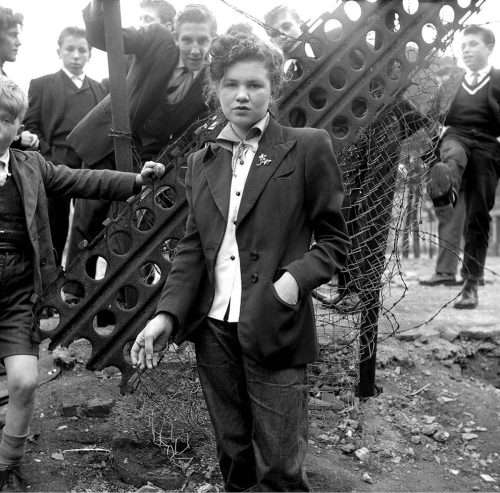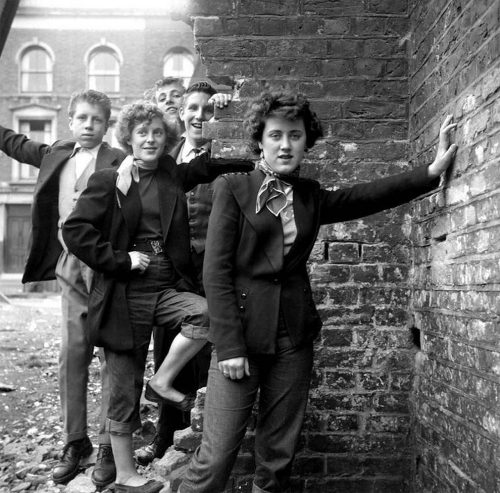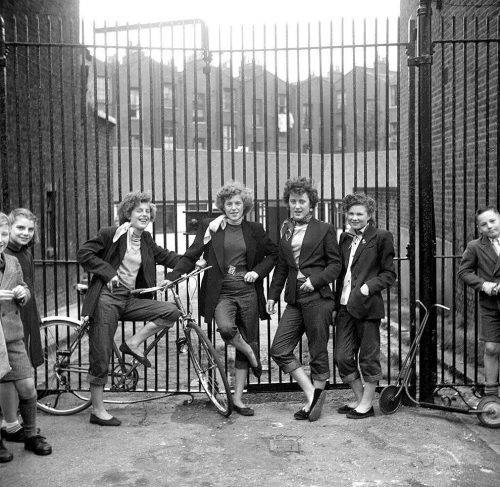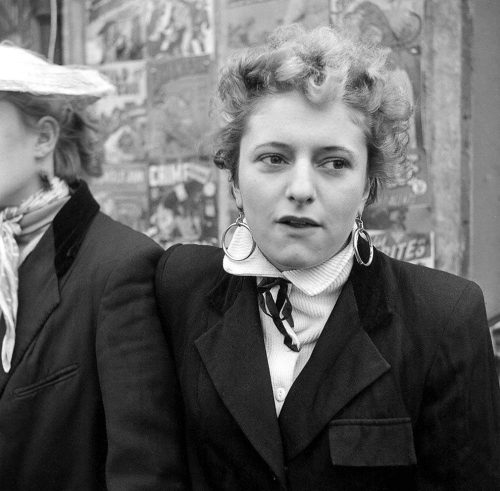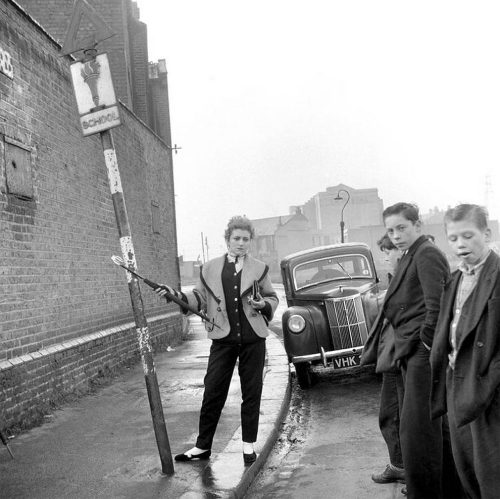How To Dress Yukata (for Men)

How to dress Yukata (for men)
More Posts from Philosophical-amoeba and Others
IT’S NATIONAL LIBRARY WEEK

HUZZAH! It is National Library Week, bookworms and library cats!!
And that means it is the perfect time of year to show some love to your local (and not local) Libraries, both in person and online. So, just as we took time to make a special post on Follow a Library Day last year, we’ve created ANOTHER master post to honor all the libraries we know so far on tumblr so that you can #followalibrary!!
Check out their tumblrs below and show them some love, bookworms! (Alphabetical by url)
@alachualibrary (The Alachua County Library District)
@alt-library (By Sacramento Public Library)
@aplibrary (Abilene Public Library)
@austinpubliclibrary (Austin Public Library)
@badgerslrc (The Klamath Community College’s Learning Research Center)
@bflteens (Baker Free Library’s Tumblr For Teens)
@bibliosanvalentino (Biblioteca San Valentino [San Valentino Library])
@biodivlibrary (Biodiversity Heritage Library)
@bodleianlibs (Bodleian Libraries)
@boonelibrary (Boone County Public Library)
@brkteenlib (Brookline Public Library Teen Services Department)
@californiastatelibrary (California State Library)
@cheshirelibrary (Cheshire Public Library)
@cityoflondonlibraries (City of London Libraries)
@cmclibraryteen (Cape May County Library’s Teen Services)
@cobblibrary (Cobb County Public Library System)
@cpl-archives (Cleveland Public Library Archives)
@cplsteens (Clearwater Public Library Teens)
@darienlibrary (Darien Library)
@dcpubliclibrary (DC Public Library)
@decaturpubliclibrary (Decatur Public Library)
@delawarelibrary (Delaware County District Library)
@detroitlib (Detroit Public Library Music, Arts & Literature Department)
@douglaslibraryteens (Douglas Library For Teens)
@dplteens (Danville Public Library Teens)
@escondidolibrary (Escondido Public Library)
@fontanalib (Fontana Regional Library)
@fppld-teens (Franklin Park Library Teens)
@friscolibrary (Frisco Public Library)
@gastonlibrary (Gaston County Public Library)
@glendaleteenlibrary (Glendale Public Library Teens)
@hpldreads (Havana Public Library District)
@hpl-teens (Homewood Public Library For Teens)
@kingsbridgelibraryteens (Kingsbridge Library Teens Advisory Group)
@lanelibteens (Lane Memorial Library Teen Services)
@lawrencepubliclibrary (Lawrence Public Library)
@marioncolibraries (Marion County Public Library System)
@mrcplteens (Mansfield/Richland County Public Library Teen Zone)
@myrichlandlibrary (Mansfield/Richland County Public Library)
@necclibrary (Northern Essex Community College Libraries)
@novipubliclibrary (Novi Public Library)
@nplteens (Nashua Public Library Teens)
@orangecountylibrarysystem (Orange County Library System)
@othmeralia (Othmer Library of Chemical History)
@petit-branch-library (Petit Branch Library)
@pflibteens (Pflugerville Public Library Teenspace)
@plainfieldlibrary (Plainfield Public Library District)
@royhartlibrary (RoyHart Community Library)
@safetyharborpubliclibrary (Safety Harbor Library Teen Zone)
@santamonicalibr (Santa Monica Public Library)
@schlowlibrary (Schlow Centre Region Library)
@smithsonianlibraries (Museum Library System)
@smlibrary (Sheppard Memorial Library)
@southeastlibrary (Southeast Branch Library)
@tampabaylibraryconsortium-blog (Tampa Bay Library Consortium)
@teenbookerie (Erie County Public Library For Teens)
@teencenterspl (The Smith Public Library Teen Center)
@teensfvrl (Fraser Valley Regional Library)
@teen-stuff-at-the-library (White Oak Library District)
@therealpasadenapubliclibrary (Pasadena Public Library)
@ucflibrary (University of Central Florida Library)
@uwmspeccoll (University of Wisconsin Milwaukee Libraries Special Collections)
@vculibraries (Virginia Commonwealth University Libraries)
@waynecountyteenzone (Wayne County Public Library’s Teen Space)
@wellingtoncitylibraries (Wellington City Libraries)
@widenerlibrary (Harvard’s Widener Library)
Whew! There’s a LOT of you. :) But we now this list is just getting started! Feel free to keep the library love going by adding any libraries we missed/don’t know of yet! (And if you’re not following US already, well, what better time to start than this week? ;) Eh? Eh?) And, of course, never hesitate to visit your Library in person. We love seeing you! :)
Happy National Library Week, library cats!

The beautiful stone church at Gallarus, Dingle, Co. Kerry, Ireland. It’s circa 1000 years old

The late effects of stress: New insights into how the brain responds to trauma
Mrs. M would never forget that day. She was walking along a busy road next to the vegetable market when two goons zipped past on a bike. One man’s hand shot out and grabbed the chain around her neck. The next instant, she had stumbled to her knees, and was dragged along in the wake of the bike. Thankfully, the chain snapped, and she got away with a mildly bruised neck. Though dazed by the incident, Mrs. M was fine until a week after the incident.
Then, the nightmares began.
She would struggle and yell and fight in her sleep every night with phantom chain snatchers. Every bout left her charged with anger and often left her depressed. The episodes continued for several months until they finally stopped. How could a single stressful event have such extended consequences?
A new study by Indian scientists has gained insights into how a single instance of severe stress can lead to delayed and long-term psychological trauma. The work pinpoints key molecular and physiological processes that could be driving changes in brain architecture.
The team, led by Sumantra Chattarji from the National Centre for Biological Sciences (NCBS) and the Institute for Stem Cell Biology and Regenerative Medicine (inStem), Bangalore, have shown that a single stressful incident can lead to increased electrical activity in a brain region known as the amygdala. This activity sets in late, occurring ten days after a single stressful episode, and is dependent on a molecule known as the N-Methyl-D-Aspartate Receptor (NMDA-R), an ion channel protein on nerve cells known to be crucial for memory functions.
The amygdala is a small, almond-shaped groups of nerve cells that is located deep within the temporal lobe of the brain. This region of the brain is known to play key roles in emotional reactions, memory and making decisions. Changes in the amygdala are linked to the development of Post-Traumatic Stress Disorder (PTSD), a mental condition that develops in a delayed fashion after a harrowing experience.
Previously, Chattarji’s group had shown that a single instance of acute stress had no immediate effects on the amygdala of rats. But ten days later, these animals began to show increased anxiety, and delayed changes in the architecture of their brains, especially the amygdala.
“We showed that our study system is applicable to PTSD. This delayed effect after a single episode of stress was reminiscent of what happens in PTSD patients,” says Chattarji. “We know that the amygdala is hyperactive in PTSD patients. But no one knows as of now, what is going on in there,” he adds.
Investigations revealed major changes in the microscopic structure of the nerve cells in the amygdala. Stress seems to have caused the formation of new nerve connections called synapses in this region of the brain. However, until now, the physiological effects of these new connections were unknown.
In their recent study, Chattarji’s team has established that the new nerve connections in the amygdala lead to heightened electrical activity in this region of the brain.
“Most studies on stress are done on a chronic stress paradigm with repeated stress, or with a single stress episode where changes are looked at immediately afterwards – like a day after the stress,” says Farhana Yasmin, one of the Chattarji’s students. “So, our work is unique in that we show a reaction to a single instance of stress, but at a delayed time point,” she adds.
Furthermore, a well-known protein involved in memory and learning, called NMDA-R has been recognised as one of the agents that bring about these changes. Blocking the NMDA-R during the stressful period not only stopped the formation of new synapses, it also blocked the increase in electrical activity at these synapses.
“So we have for the first time, a molecular mechanism that shows what is required for the culmination of events ten days after a single stress,” says Chattarji. “In this study, we have blocked the NMDA Receptor during stress. But we would like to know if blocking the molecule after stress can also block the delayed effects of the stress. And if so, how long after the stress can we block the receptor to define a window for therapy,” he adds.
Chattarji’s group first began their investigations into how stress affects the amygdala and other regions of the brain around ten years ago. The work has required the team to employ an array of highly specialised and diverse procedures that range from observing behaviour to recording electrical signals from single brain cells and using an assortment of microscopy techniques. “To do this, we have needed to use a variety of techniques, for which we required collaborations with people who have expertise in such techniques,” says Chattarji. “And the glue for such collaborations especially in terms of training is vital. We are very grateful to the Wadhwani Foundation that supports our collaborative efforts and to the DBT and DAE for funding this work,” he adds.

“The Mouse chirpeth… The Duck quaketh… The Wolf howleth” — from the very first picture book for children, published in 1658: http://buff.ly/2l6FaBH

David in Singapore, Serious Moonlight Tour 1983
Photo © Denis O’Regan

Paralyzed ALS patient operates speech computer with her mind
In the UMC Utrecht a brain implant has been placed in a patient enabling her to operate a speech computer with her mind. The researchers and the patient worked intensively to get the settings right. She can now communicate at home with her family and caregivers via the implant. That a patient can use this technique at home is unique in the world. This research was published in the New England Journal of Medicine.
Because she suffers from ALS disease, the patient is no longer able to move and speak. Doctors placed electrodes in her brain, and the electrodes pick up brain activity. This enables her to wirelessly control a speech computer that she now uses at home.
Mouse click
The patient operates the speech computer by moving her fingers in her mind. This changes the brain signal under the electrodes. That change is converted into a mouse click. On a screen in front of her she can see the alphabet, plus some additional functions such as deleting a letter or word and selecting words based on the letters she has already spelled. The letters on the screen light up one by one. She selects a letter by influencing the mouse click at the right moment with her brain. That way she can compose words, letter by letter, which are then spoken by the speech computer. This technique is comparable to actuating a speech computer via a push-button (with a muscle that can still function, for example, in the neck or hand). So now, if a patient lacks muscle activity, a brain signal can be used instead.
Wireless
The patient underwent surgery during which electrodes were placed on her brain through tiny holes in her skull. A small transmitter was then placed in her body below her collarbone. This transmitter receives the signals from the electrodes via subcutaneous wires, amplifies them and transmits them wirelessly. The mouse click is calculated from these signals, actuating the speech computer. The patient is closely supervised. Shortly after the operation, she started on a journey of discovery together with the researchers to find the right settings for the device and the perfect way to get her brain activity under control. It started with a “simple” game to practice the art of clicking. Once she mastered clicking, she focused on the speech computer. She can now use the speech computer without the help of the research team.
The UMC Utrecht Brain Center has spent many years researching the possibility of controlling a computer by means of electrodes that capture brain activity. Working with a speech computer driven by brain signals measured with a bathing cap with electrodes has long been tested in various research laboratories. That a patient can use the technique at home, through invisible, implanted electrodes, is unique in the world.
If the implant proves to work well in three people, the researchers hope to launch a larger, international trial. Ramsey: “We hope that these results will stimulate research into more advanced implants, so that some day not only people with communication problems, but also people with paraplegia, for example, can be helped.”


In the days after the September 11 terrorist attacks, a number of spontaneous memorials appeared in the city. One, later named Tiles for America, displayed thousands of hand-painted tiles with inspirational messages. The tiles were hung on a chain-link fence at the corner of Seventh and Greenwich Avenues, where they remained as a place of remembrance for years afterward.
Irwin Silver. Tiles on fence, Greenwich House project, 7th Avenue & Greenwich Avenue. May 2002. New-York Historical Society.
Largest Batch of Earth-size, Habitable Zone Planets
Our Spitzer Space Telescope has revealed the first known system of seven Earth-size planets around a single star. Three of these planets are firmly located in an area called the habitable zone, where liquid water is most likely to exist on a rocky planet.
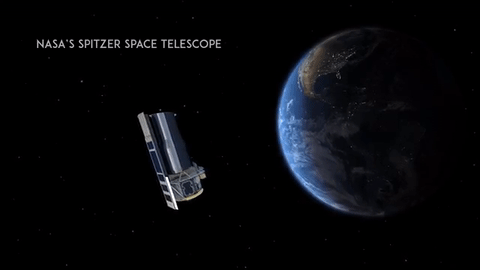
This exoplanet system is called TRAPPIST-1, named for The Transiting Planets and Planetesimals Small Telescope (TRAPPIST) in Chile. In May 2016, researchers using TRAPPIST announced they had discovered three planets in the system.

Assisted by several ground-based telescopes, Spitzer confirmed the existence of two of these planets and discovered five additional ones, increasing the number of known planets in the system to seven.
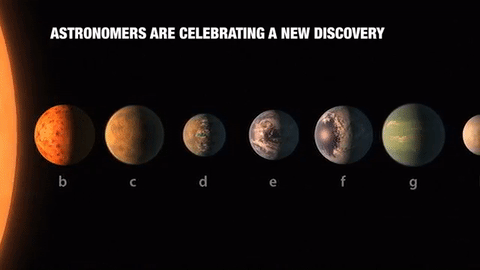
This is the FIRST time three terrestrial planets have been found in the habitable zone of a star, and this is the FIRST time we have been able to measure both the masses and the radius for habitable zone Earth-sized planets.
All of these seven planets could have liquid water, key to life as we know it, under the right atmospheric conditions, but the chances are highest with the three in the habitable zone.

At about 40 light-years (235 trillion miles) from Earth, the system of planets is relatively close to us, in the constellation Aquarius. Because they are located outside of our solar system, these planets are scientifically known as exoplanets. To clarify, exoplanets are planets outside our solar system that orbit a sun-like star.

In this animation, you can see the planets orbiting the star, with the green area representing the famous habitable zone, defined as the range of distance to the star for which an Earth-like planet is the most likely to harbor abundant liquid water on its surface. Planets e, f and g fall in the habitable zone of the star.
Using Spitzer data, the team precisely measured the sizes of the seven planets and developed first estimates of the masses of six of them. The mass of the seventh and farthest exoplanet has not yet been estimated.

For comparison…if our sun was the size of a basketball, the TRAPPIST-1 star would be the size of a golf ball.
Based on their densities, all of the TRAPPIST-1 planets are likely to be rocky. Further observations will not only help determine whether they are rich in water, but also possibly reveal whether any could have liquid water on their surfaces.
The sun at the center of this system is classified as an ultra-cool dwarf and is so cool that liquid water could survive on planets orbiting very close to it, closer than is possible on planets in our solar system. All seven of the TRAPPIST-1 planetary orbits are closer to their host star than Mercury is to our sun.

The planets also are very close to each other. How close? Well, if a person was standing on one of the planet’s surface, they could gaze up and potentially see geological features or clouds of neighboring worlds, which would sometimes appear larger than the moon in Earth’s sky.

The planets may also be tidally-locked to their star, which means the same side of the planet is always facing the star, therefore each side is either perpetual day or night. This could mean they have weather patterns totally unlike those on Earth, such as strong wind blowing from the day side to the night side, and extreme temperature changes.

Because most TRAPPIST-1 planets are likely to be rocky, and they are very close to one another, scientists view the Galilean moons of Jupiter – lo, Europa, Callisto, Ganymede – as good comparisons in our solar system. All of these moons are also tidally locked to Jupiter. The TRAPPIST-1 star is only slightly wider than Jupiter, yet much warmer.
How Did the Spitzer Space Telescope Detect this System?
Spitzer, an infrared telescope that trails Earth as it orbits the sun, was well-suited for studying TRAPPIST-1 because the star glows brightest in infrared light, whose wavelengths are longer than the eye can see. Spitzer is uniquely positioned in its orbit to observe enough crossing (aka transits) of the planets in front of the host star to reveal the complex architecture of the system.

Every time a planet passes by, or transits, a star, it blocks out some light. Spitzer measured the dips in light and based on how big the dip, you can determine the size of the planet. The timing of the transits tells you how long it takes for the planet to orbit the star.

The TRAPPIST-1 system provides one of the best opportunities in the next decade to study the atmospheres around Earth-size planets. Spitzer, Hubble and Kepler will help astronomers plan for follow-up studies using our upcoming James Webb Space Telescope, launching in 2018. With much greater sensitivity, Webb will be able to detect the chemical fingerprints of water, methane, oxygen, ozone and other components of a planet’s atmosphere.
At 40 light-years away, humans won’t be visiting this system in person anytime soon…that said…this poster can help us imagine what it would be like:

Make sure to follow us on Tumblr for your regular dose of space: http://nasa.tumblr.com
-
 mhufflepuff02 liked this · 8 months ago
mhufflepuff02 liked this · 8 months ago -
 noahatomico01 liked this · 9 months ago
noahatomico01 liked this · 9 months ago -
 lunareclypserituals reblogged this · 11 months ago
lunareclypserituals reblogged this · 11 months ago -
 mariegocf liked this · 11 months ago
mariegocf liked this · 11 months ago -
 simbilmyne liked this · 11 months ago
simbilmyne liked this · 11 months ago -
 woodblxssomcrowned reblogged this · 11 months ago
woodblxssomcrowned reblogged this · 11 months ago -
 1-3-306 liked this · 1 year ago
1-3-306 liked this · 1 year ago -
 werewolfin liked this · 1 year ago
werewolfin liked this · 1 year ago -
 yamg3ta-14o6 liked this · 2 years ago
yamg3ta-14o6 liked this · 2 years ago -
 thornton-billerbek liked this · 2 years ago
thornton-billerbek liked this · 2 years ago -
 the-illiterate-pirate liked this · 2 years ago
the-illiterate-pirate liked this · 2 years ago -
 rude47 reblogged this · 2 years ago
rude47 reblogged this · 2 years ago -
 g-616 liked this · 3 years ago
g-616 liked this · 3 years ago -
 the-dangerous-disadvantage liked this · 3 years ago
the-dangerous-disadvantage liked this · 3 years ago -
 sasindrika liked this · 3 years ago
sasindrika liked this · 3 years ago -
 fireburdama liked this · 3 years ago
fireburdama liked this · 3 years ago -
 sekoseko liked this · 3 years ago
sekoseko liked this · 3 years ago -
 akemicass liked this · 3 years ago
akemicass liked this · 3 years ago -
 quanquanquan liked this · 4 years ago
quanquanquan liked this · 4 years ago -
 diecedhoards reblogged this · 5 years ago
diecedhoards reblogged this · 5 years ago -
 xtyrestormx liked this · 6 years ago
xtyrestormx liked this · 6 years ago -
 afishtrap reblogged this · 6 years ago
afishtrap reblogged this · 6 years ago -
 wafflefort liked this · 6 years ago
wafflefort liked this · 6 years ago -
 filbert9 liked this · 7 years ago
filbert9 liked this · 7 years ago -
 sleonesia reblogged this · 7 years ago
sleonesia reblogged this · 7 years ago -
 sleonesia liked this · 7 years ago
sleonesia liked this · 7 years ago -
 mikon35 liked this · 7 years ago
mikon35 liked this · 7 years ago -
 vainlimeink liked this · 7 years ago
vainlimeink liked this · 7 years ago -
 sweetsonryse liked this · 7 years ago
sweetsonryse liked this · 7 years ago -
 na-vidya-na-avidya liked this · 7 years ago
na-vidya-na-avidya liked this · 7 years ago -
 bsh091309 liked this · 7 years ago
bsh091309 liked this · 7 years ago -
 ulfric42 reblogged this · 7 years ago
ulfric42 reblogged this · 7 years ago
A reblog of nerdy and quirky stuff that pique my interest.
291 posts





